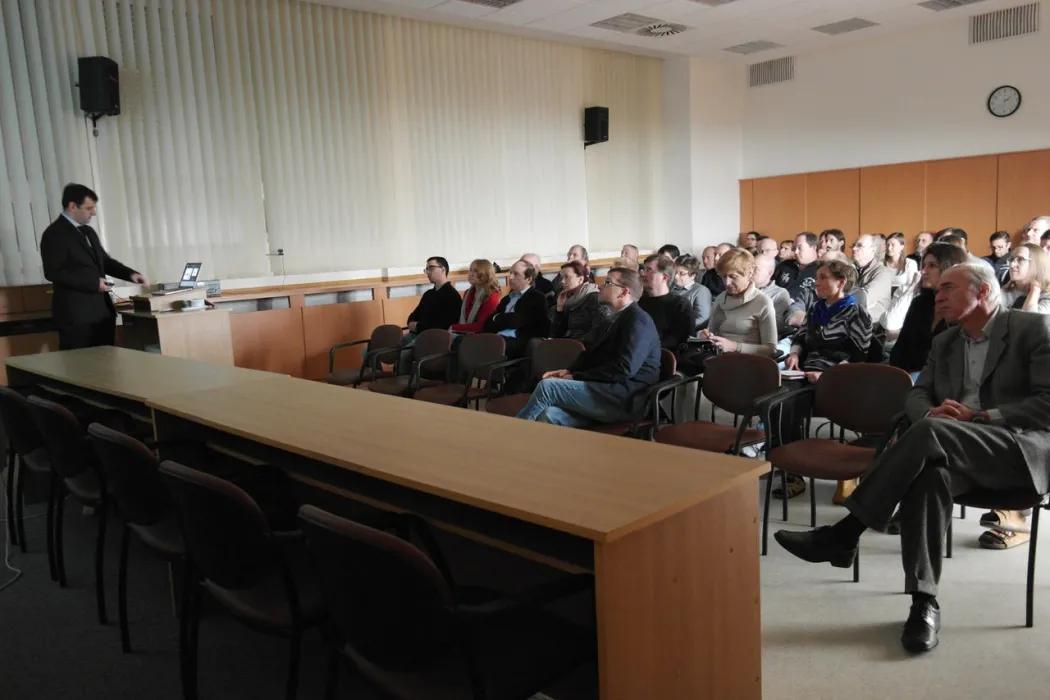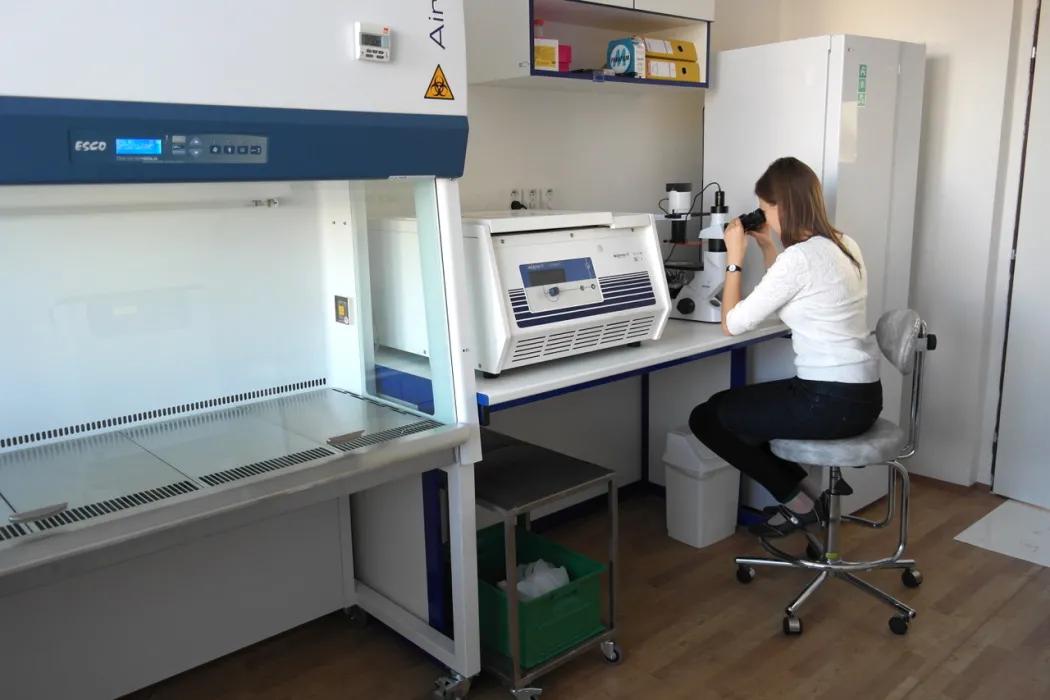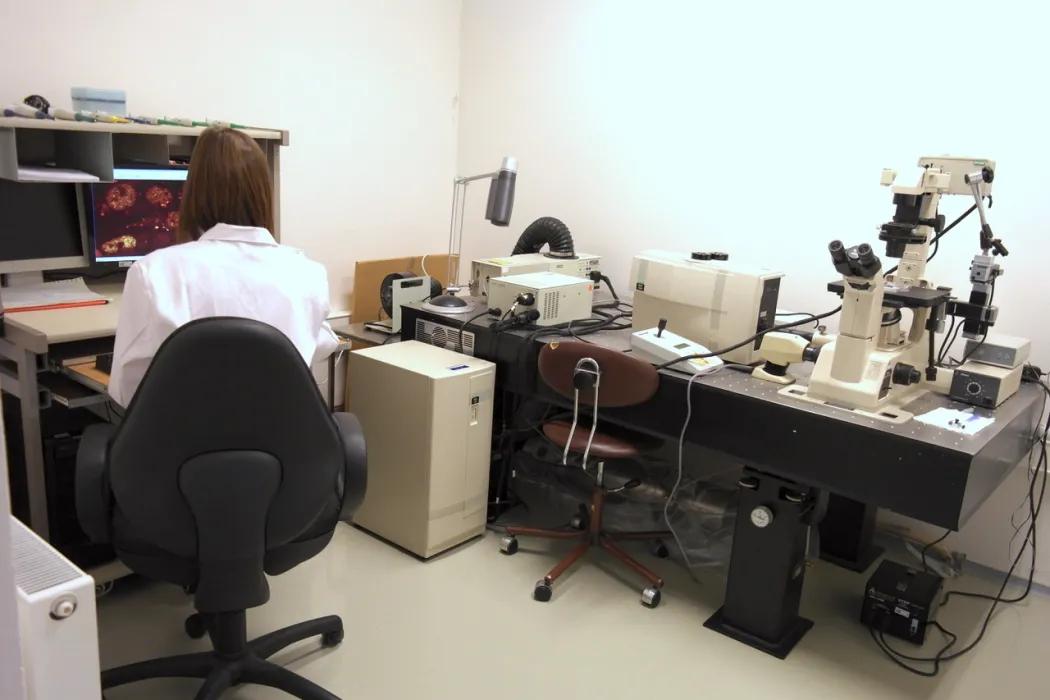New biophysical laboratory equipped for a wide range of biological experiments, was opened at the Institute of Physics CAS on Wednesday, December 7th, 2016. Newly built cell culturing facility in conjunction with a new microscopic laboratory creates a basic infrastructure for interdisciplinary biophysical workplace allowing to do comprehensive research in physics, chemistry, biology and medicine fields.
Biophysically oriented research was actively developed at the Institute of Physics CAS in recent years providing a series of excellent results published in high-quality peer-reviewed journals, for example [1-4]. The new laboratory provides a much better link between research groups that deal with biophysical research that helps to strengthen their position internationally. Among the fundamental tasks of the biological laboratory will be mainly in-vitro research in the following directions:
- Testing of the toxicity and biocompatibility of materials.
- Advanced research of interactions of nanoparticles/microparticles with living cells, including the analysis of functional consequences for the cells.
- Preparation and maintenance of cell cultures.
- Research on the influence of various physical factors (magnetic field, electric field, radiation, etc.) on distinct cellular models.
- Confocal microscopy, absorption and fluorescence spectroscopy, ellipsometry and other optical methods.
- Preparation of biological samples for further advanced analysis (EPR, AFM, SEM, gene expression, etc.).
For more information contact the Department of optical and biophysical systems .
References
[1] How a high-gradient magnetic field could affect cell life. Sci Rep. 2016; 6: 37407.
[2a] Modulation of collective cell behaviour by geometrical constraints. Integr Biol. 2016; 8: 1099. Journal cover page;
[2b] Control of hepatic cells growth by topologically modulated substrates. J Hepatol. 2016; 64: S348.
[3] The interplay between biological and physical scenarios of bacterial death induced by non-thermal plasma. Biomaterials. 2016; 82: 71.
[4] An effective strategy of magnetic stem cell delivery for spinal cord injury therapy. Nanoscale. 2015; 7: 3954.



